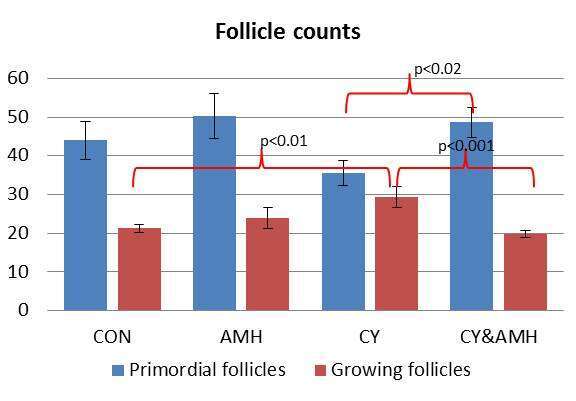
Pharmacalogical Administration of Anti Mullerian Hormone (Amh) Prevents Loss of Ovarian Reserve and Protects Fertility in Chemotherapy Treated Mice
2Sackler School of Medicine, Tel Aviv University
Loss of AMH as a result of the death of growing follicles has been implicated in chemotherapy-induced follicle loss and presents a potential target for pharmacological fertility preservation.
Aim: To determine whether replacement of negative regulator, AMH, at the time of treatment can prevent chemotherapy-induced follicle activation and loss, and to test the in vivo functionality of a partial recombinant (r)AMH molecule.
Methods:
- Biotin-labeled C-terminal fragment rAMH was injected IP into normal (n=12) and low-reserve female mice (n=20) to assess delivery method. Ovaries were removed for protein analysis and immuno-histochemistry.
- Mature female mice (n=30) were treated with 150mg/kg Cy/PBS, +/- 5µg rAMH. Ovaries were processed histologically for differential follicle counts.
Results: In both normal and low-reserve mice a single IP injection of rAMH achieved a significant presence in the ovaries.
Mice treated with rAMH during chemotherapy retained a significantly higher number of primordial follicles both in the short (7 days) and long term (21 days) after treatment (p< 0.02 compared to mice treated with Cy alone), and had fewer growing follicles in the short term (p

Conclusion: This proof of principle study demonstrates that suppression of follicle activation using AMH prevents chemotherapy-induced follicle reserve loss, and further that the partial molecule rAMH has physiological activity. These results confirm both that follicle activation is a significant cause of chemotherapy induced follicle loss, and suggests that follicle suppression via rhAMH could be an effective pharmacological method for fertility preservation during chemotherapy.

Powered by Eventact EMS